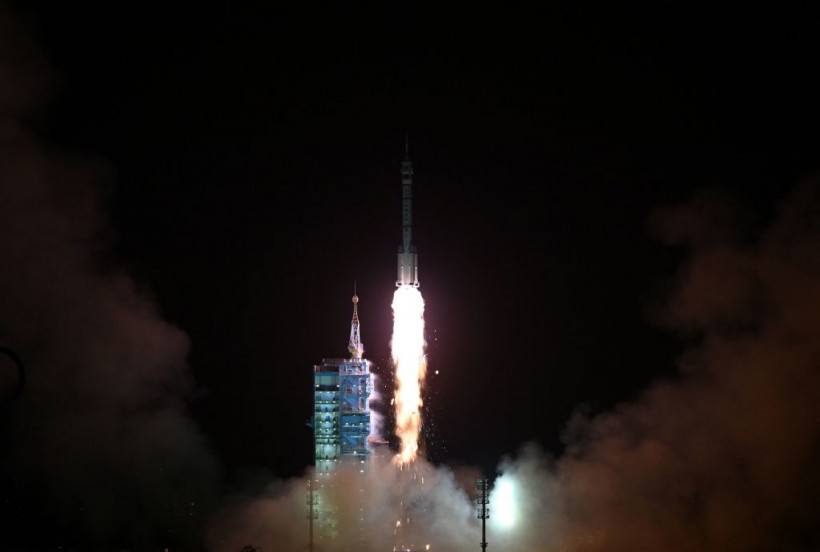On Thursday, China achieved the successful launch of a reusable robotic spacecraft for the third time since 2020. These secretive orbital test flights focus on developing reusable technologies to cut down space mission expenses. The uncrewed space plane was launched from the Jiuquan Satellite Launch Center in northwest China aboard a Long March 2F rocket.

A Long March-2F carrier rocket, carrying the Shenzhou-15 spacecraft with three astronauts to China's Tiangong space station, lifts off from the Jiuquan Satellite Launch Center in Northwest Chinas Gansu Province late on November 29, 2022.
China's 'Divine Dragon' Soars Again
China successfully launched its experimental space plane, known as Shenlong or "Divine Dragon" in Chinese, on Thursday, December 14, with primary objectives including conducting space science experiments and contributing to the peaceful use of space.
The launch marks a significantly shorter interval of seven months since the spacecraft's last mission, a notable contrast to the initial two launches, which had a 23-month gap.
After liftoff, the spacecraft is slated to operate in orbit for an unspecified duration before returning to a designated landing site in China. State media reported that during its flight, the mission aims to "verify" reusable technologies and conduct various space experiments. However, specific details regarding these technologies and experiments were not disclosed.
The spacecraft's previous launch occurred in August 2022, and after spending 276 days in orbit, it returned to Earth. Unfortunately, no information has been provided regarding the tested technologies, the altitude reached during the mission, or any visual documentation of the spacecraft, which has not been made public.
China's ambition for a reusable spacecraft aligns with the United States' parallel and equally secretive program involving the autonomous spaceplane known as the X-37B. Both nations appear to be advancing their capabilities in reusable spaceflight technology.
READ ALSO: SpaceX Falcon Heavy Launch of X-37B Space Plane for U.S. Space Force Delayed For Another 24 Hours
Mystery to Global Spaceplane Race
SpaceX postponed the 7th planned liftoff of the U.S. Space Force's X-37B reusable space plane, known as USSF-52, and removed the Falcon Heavy rocket from the Kennedy Space Center launch pad. The delay, announced on Wednesday, December 13, was attributed to the need for additional system checkouts, with no confirmed rescheduled launch date. The reasons behind the delay remain undisclosed.
Similar to the secretive nature of the X-37B, China's Shenlong is shrouded in mystery. While limited information is available, it seems the spacecraft is utilized for testing new payloads and orbital operations. Notably, it launches vertically on a rocket, carries out its mission, and lands horizontally on a runway, resembling NASA's space shuttle.
The timing of the launches of both space planes is not coincidental, according to General Chance Saltzman, U.S. Space Force's Chief of Space Operations. At the Space Force Association's Spacepower Conference, Saltzman noted that both China and the U.S. are keenly interested in each other's space planes, given the capability to deploy objects into orbit, conduct operations, and analyze results upon return.
The synchronized launch attempts suggest a strategic parallelism in the space capabilities of the two nations. In the last flight of China's robotic space plane, lasting 276 days, the spacecraft ejected an unidentified object into orbit, prompting speculation about its purpose, possibly a small satellite or a disused service module.
RELATED ARTICLE: Mysterious Chinese Uncrewed Spacecraft Returns After 276 Days in Orbit; A Breakthrough Into Reusable, Inexpensive Shuttle for Space Missions
Check out more news and information on Space in Science Times.














